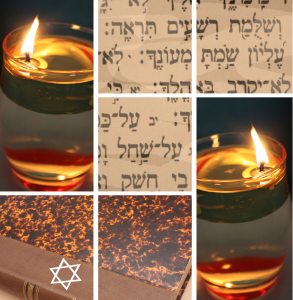The holiness of the human body can be understood on a few levels.
One area the Torah reveals this is in the prohibition to maim or inflict any wound upon the body unnecessarily (Talmud, Bava Kama 91b, Tosafos loc.cit sv. Ela; Rambam, Choveil U’mazaik 5:1; Chavos Yair # 163, based upon the obligation to “guard oneself exeedingly”, Deut. 4:15, and “not to destroy wantonly”, Deut. 20:19).
Even if one wants to do so, we were not given that license as our bodies were not given to us to do as we want, rather entrusted to us as a sacred trust from the Al-mighty to use this body properly.
Let’s take a deeper look at this. The body is a partner with the soul in its struggle to serve G-d in this world. There isn’t a single mitzvah that the soul can perform without its cohort, the body. G-d purposely set up the world in that way. Animals are all body, angels are all soul, and man is the combination of the two.
This is the underlying foundation for the Jewish belief in the “techias hameisim,” or eventual revival of the dead. That period, also known as “Olam Haba” or the Next World, the final world of the ultimate reward, must first be ushered in by the reunification of the bodies with their souls. Why is this so? Why cannot the souls themselves, which are eternal, receive that reward?
My late mentor, R’ Shlomo Wolbe, explained that it is only fair that both partners, the body and the soul, should together share in the final, ultimate bliss. Since all of the mitzvos were performed by the soul in partnership with the body, the soul could not fairly receive that reward alone. This speaks volumes about the way we look at the human body.
The Kabbalistic writings closely connect every limb, muscle and sinew of the human body to a specific mitzvah of the Torah. There is a count of 248 limbs and 365 main sinews of the body, corresponding the 248 positive mitzvos (the “do’s”) and the 365 negative mitzvos (the “do not’s”) (See Talmud, end of Tractate Makos). Every time a mitzvah is performed, the part of that body which parallels that mitzvah becomes elevated and sanctified.
Throughout the Torah we find G-d described in human terms: He took us out of Egypt with an “outstretched arm,” His “eyes” are upon us, He “hears” our affliction, etc. This is difficult to understand as it is a core belief of Judaism that G-d has no physicality.
One answer given by the commentators is that there are anthropomorphisms, meaning just a way for us to have an inkling of what is happened using human experiences we can appreciate and fathom.
The deeper answer given by the Kabbalists is that all that G-d performs in this world is parallel to similar attributes in the human body. There is a type of “spiritual human body” which is the sum total of all the upper, spiritual worlds. G-d created the physical human body in sync with all that He wishes to relate and express through His divine providence throughout all of human history.
This is an entirely new insight on the loftiness and holiness of the human body; its very essence is nothing less than an expression of G-dliness in the world. This is implicit in the verse that man was created “in the image of G-d” (Gen. 1:27).
This explains the tremendous responsibility we hold to be the proper stewards of the gift of the body we have received and our obligation to treat it with the proper respect and sanctity it deserves.
Sincerely,
Rabbi Yerachmiel Fried

